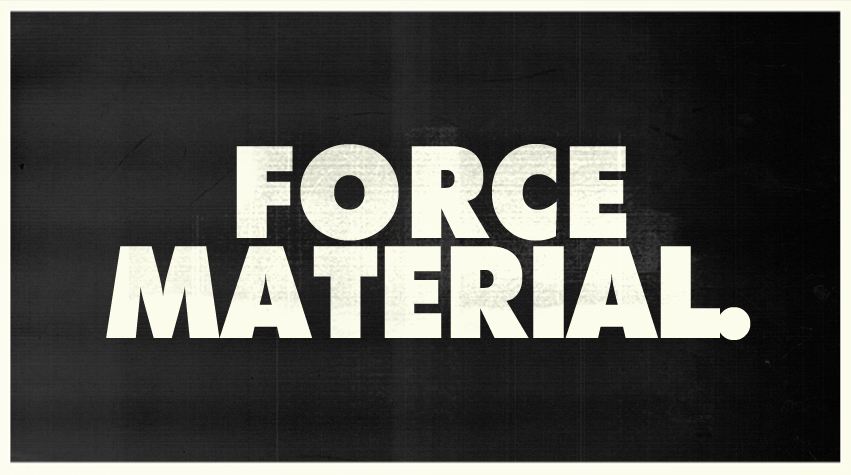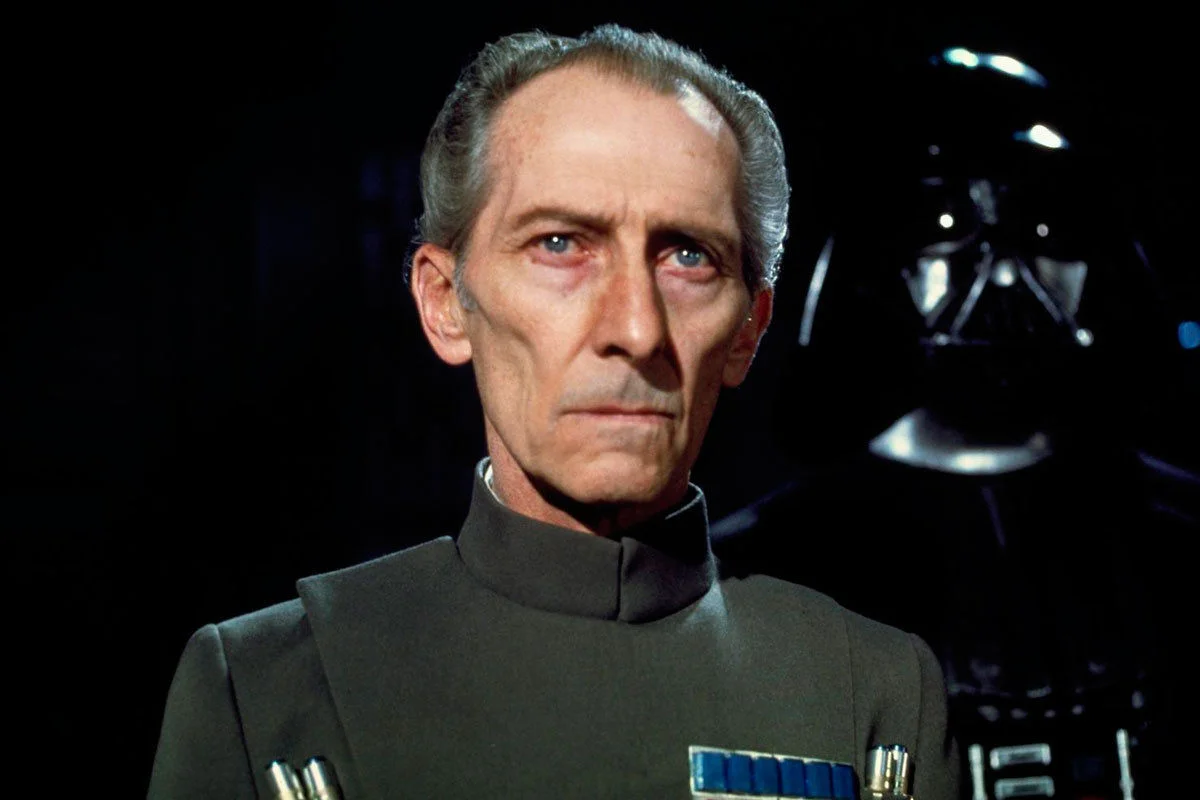Should auld acquaintance be forgot?
The debate supposedly sparked by the appearance of Grand Moff Tarkin in Rogue One has actually been going on for decades.
Warning: This article contains spoilers for Rogue One.
For all of Rogue One’s many talking points, it’s the digital resurrection of Peter Cushing as Grand Moff Tarkin that has generated the most heated discussion.
Slammed as “a giant breach of respect for the dead” by The Huffington Post, Tarkin’s revival has been treated as a breakthrough that presents new, interesting questions and challenges for filmmakers and audiences to grapple with.
Dave Itzkoff’s in-depth article for The New York Times about the process of bringing Tarkin back to life places the film at the centre of a “postmodern debate about the ethics of prolonging the life span of a character and his likeness beyond that of the actor who originated the role”.
In the same article, the filmmakers themselves acknowledge the “slippery slope argument”; the idea that, by creating a digital likeness of Peter Cushing in Rogue One, they have potentially opened the door for more films to employ digital reproductions of deceased actors.
But if this is a slippery slope, it’s one Hollywood has been heading down for decades.
The film’s revival of Peter Cushing is not particularly transgressive or revolutionary — it’s simply the latest advancement in a process that Hollywood has been attempting to perfect for 60 years.
In 1956, Columbia Pictures released four Three Stooges shorts – Rumpus in the Harem, Hot Stuff, Scheming Schemers, and Commotion on the Ocean – that appeared to feature Moe Howard, Larry Fine and Shemp Howard.
In reality, Shemp Howard had died (of a heart attack, at age 60) before the shorts were filmed. But, rather than fail to deliver on their contract, the group simply edited new footage of Moe and Larry together with stock footage of Shemp, and, where necessary, used character actor Joe Palma as a double for Shemp (usually shot from behind, or with his face obscured).
(Decades later, Evil Dead director Sam Raimi would coin ‘Fake Shemp’ as a blanket term to describe the use of any stand-in.)
Of course, the technology used to create this first ‘Fake Shemp’ was light years away from the technology that brought Tarkin to life in Rogue One, but in practice, it’s the same thing – ‘special effects’ and body doubles are being used to substitute for the performance of a deceased actor.
Bruce Lee got the ‘Fake Shemp’ treatment after he died during the production of 1978’s Game of Death; body doubles and even a cardboard cut-out of Lee’s face were used to substitute for the martial arts legend.
In 1994, history repeated itself when Lee’s son, Brandon, passed away during the filming of The Crow; by this stage, however, the technology used to replace him had evolved, and was more akin to what we see in Rogue One. Lee’s face was digitally mapped onto a body double’s head; since the character tended to stick to the shadows anyway, it made sense for his face to be obscured, and the replacement was widely hailed as a success.
When John Candy passed away on the set of 1994’s Wagons East, a stand-in and special effects were used to complete the film. “The technology does raise troubling questions about the rapidly expanding realm of movie magic,” wrote John Horn for The Associated Press. It’s a line that could have appeared verbatim, 22 years later, in any of the recent articles on Rogue One and Tarkin.
Oliver Reed died during the production of Gladiator (2000); Reed’s face was mapped onto a double’s head using CGI for his final scenes. It was an impressive feat for a film made 16 years ago.
Alas, the use of CGI and stock footage to recreate the deceased Nancy Marchand for one last appearance in The Sopranos in 2001 was not as convincing.
Roy Schneider, who died during the production of Iron Cross (2009), was resurrected for one scene using CGI and a latex mask.
More recently, a combination of CGI and body doubles was used to finish Paul Walker’s scenes in Fast & Furious 7 after the actor’s tragic death.
Of course, these are all situations where the actors involved had already agreed to work on the film and had begun shooting scenes before their deaths.
The Tarkin situation is different – Peter Cushing passed away in 1994, almost two full decades before Disney purchased Lucasfilm and work began on Rogue One.
But this, too, is hardly unprecedented.
Humphrey Bogart died in 1957, a victim of cancer of the esophagus. Between 1982 and 1991, however, he ‘appeared’ in three projects he could scarcely have conceived of.
Carl Reiner’s Dead Men Don’t Wear Plaid (1982) saw Steve Martin interact with archival footage of Hollywood legends.
Rendez-vous in Montreal (1987), a groundbreaking animated short developed by Swiss and Canadian computer scientists, featured virtual recreations of Humphrey Bogart and Marilyn Monroe.
Finally, a 1991 Diet Coke commercial resurrected Bogart, Louis Armstrong and James Cagney via rotoscopy and was likened by some critics to grave-robbing.
Rendez-vous in Montreal, in particular, seemed to initiate and anticipate the debate regarding ‘virtual’ actors in the 21st century, and inspired the first real study of the implications of such technology – Joseph J Beard’s Casting Call at Forest Lawn: The Digital Resurrection of Deceased Entertainers – A 21st Century Challenge for Intellectual Property Law, published in the Berkeley Technology Law Journal in 1993.
Riffing on the possibilities presented by these 'virtual' actors, Steve Williams — then an animator at ILM — offered this prediction in 1992.
"Long-dead Presidents will be on TV, computer generated, giving speeches. Actors who died 50 years ago will be starring next to contemporary actors," Williams told TIME Magazine as part of their profile on ILM, They Put the ILM in Film.
"We could even create actors who have never been born — guys you don't have to pay points or give trailers to. And," he said, looking around the ILM lab, "it will probably happen here."
Fred Astaire’s widow licensed his image for a series of commercials in 1997 that digitally modified scenes from Easter Parade and Royal Wedding to depict Astaire dancing with a Dirt Devil vacuum cleaner.
Grace Kelly and Marilyn Monroe were resurrected via CGI for a Dior perfume ad in 2011; while a 3D model of Audrey Hepburn appeared in a Galaxy chocolate ad in 2014.
Then there are the feature films that used similar technology to bring long-dead actors ‘back to life’ more than a decade ago.
Superman Returns recreated Marlon Brando’s Jor-El with a mix of archival footage and CGI, while Sky Captain and the World of Tomorrow (2004) used archival footage (and dialogue supplied by another, living actor) to create a villain played by Sir Laurence Olivier, 15 years after his death in 1989.
Both actors had their faces obscured (they were both playing holograms of characters who were, themselves, long dead), helping to smooth over any imperfections in the reproductions.
The existential ‘threat’ of virtual actors has even been around long enough to spawn a 1995 novel, Connie Willis’ Remake, that posited a world in which no new movies are made, and old ones are endlessly remade using digital copies of deceased stars.
Then there’s Ari Folman’s The Congress (2013), starring Robin Wright as a fictionalised version of herself who signs away the rights to her likeness to a movie studio and submits to digital scans of her body so that the studio can make films featuring her computer-generated counterpart. Soon, the studio develops a new technology that will allow anyone to become Robin.
All of which is to say — this debate is old, but improvements in technology are making it more compelling.
For Rogue One, Guy Henry – who already looks a lot like Peter Cushing – played Tarkin on set. Animators then mapped Cushing’s face onto Henry’s (it’s important to note that Rogue One’s recreation of Cushing was done with the approval of his estate).
In the New York Times piece mentioned above, John Knoll — the Chief Creative Officer at ILM, and the man who came up with the story for Rogue One — describes the process as “a super high-tech and labor-intensive version of doing makeup”.
If the effect hadn’t succeeded, Knoll says, they would have reduced Tarkin’s screen presence by having him communicate via hologram, or by giving his dialogue to other characters.
Obviously, the filmmakers ultimately decided to go full-steam ahead with their digital Tarkin, although opinion seems split on whether or not the effect succeeded.
Anecdotally, I’ve noticed that the digital Tarkin tends to fool people who don’t know or care that Peter Cushing is dead, while those who know find the effect distracting.
I'm not convinced it was a good idea to invite the audience to take good, long looks at Tarkin's CGI visage, rather than making him a hologram or simply showing him from more generous angles — though you have to admire the confidence behind that decision.
The elephant in the room, of course, is that since the release of Rogue One, Carrie Fisher has tragically passed away — at age 60, after a heart attack, much like Shemp Howard.
When the time comes, if there are loose ends to be tied up for Leia in Episode IX, it will make sense for someone to suggest she be digitally replaced — and I hope the suggestion is laughed out of the room.
As the thoroughly unconvincing digital stand-in at the end of Rogue One proved, nobody can replace Carrie Fisher, and I’ve got all my fingers crossed that they don’t attempt to do so.
In other words, ILM, don’t be too proud of this technological terror you’ve constructed…
Force Material is a podcast exploring the secrets and source material of Star Wars with hosts Rohan Williams and Baz McAlister. Listen and subscribe on iTunes, Spotify, iHeartRadio, TuneIn, Stitcher, PlayerFM and Castro; stay in touch with us on Facebook, Twitter and Instagram; and support the show by browsing our range of shirts, hoodies, kids apparel, mugs and more at TeePublic.









